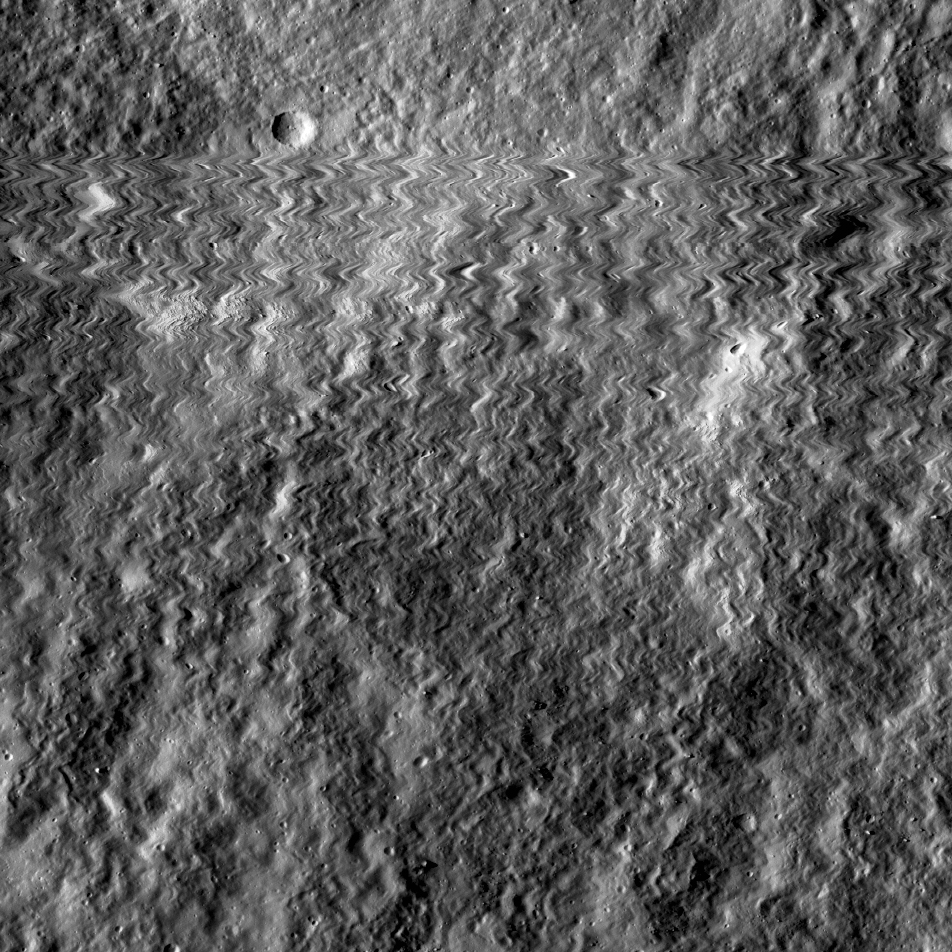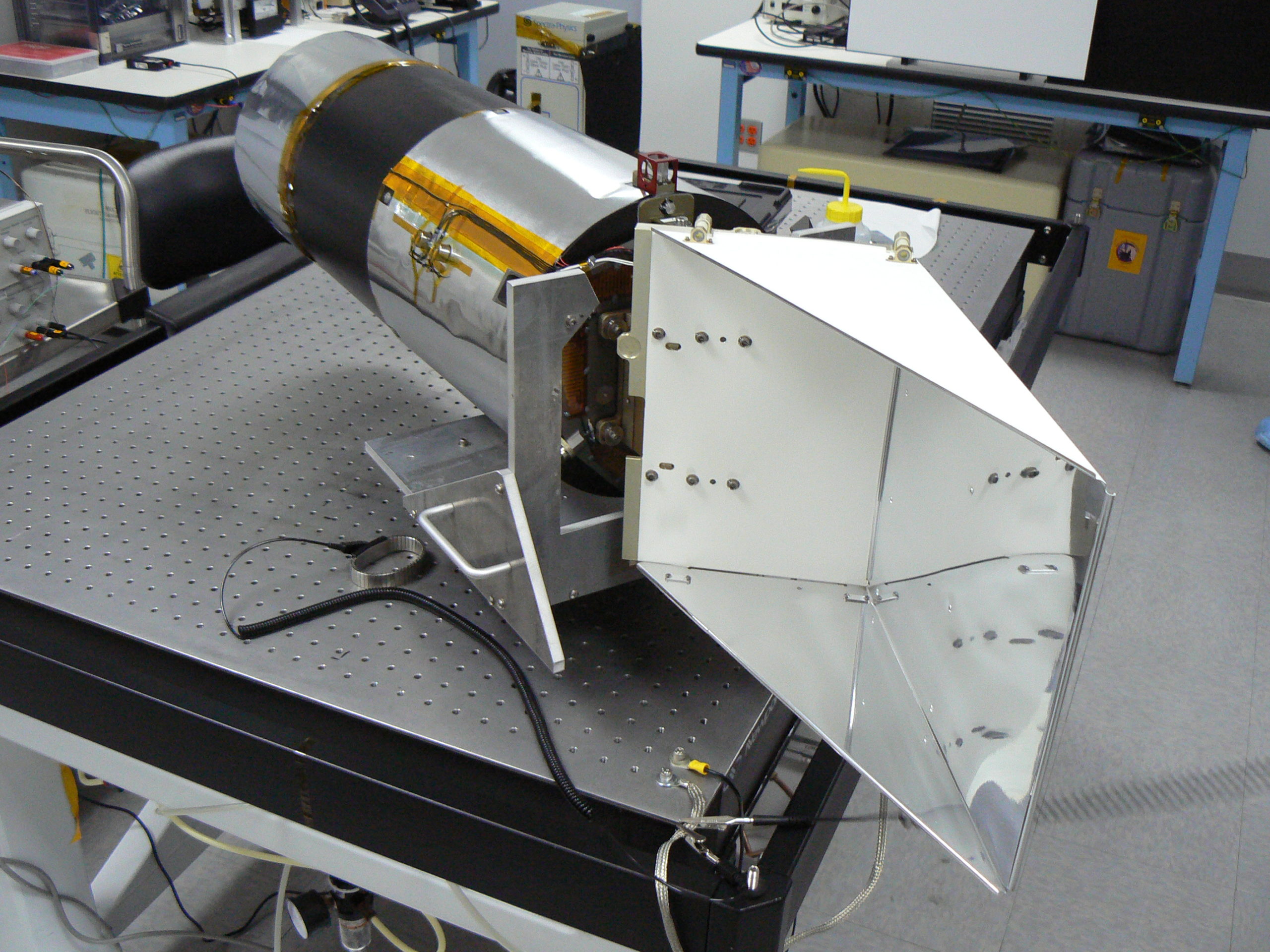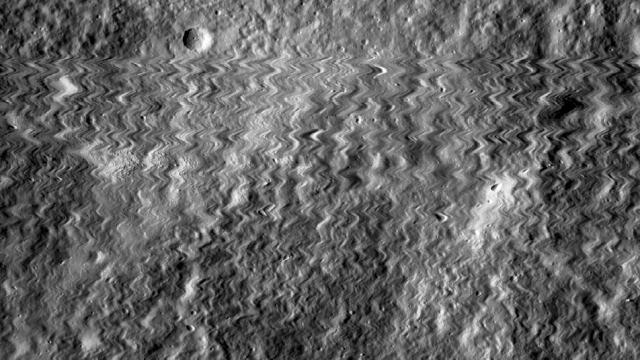Three years ago, a camera aboard NASA’s Lunar Reconnaissance Orbiter (LRO) was struck by a tiny meteoroid as it was capturing an image of the lunar surface. By studying the resulting zigzag patterns, scientists have been able to estimate the speed and size of the offending object.
Image: NASA’s Goddard Space Flight Center/Arizona State University
Since 2009, NASA’s LRO has been diligently collecting information about the surface of the Moon. To perform its work, the spacecraft is armed with three cameras, including two Narrow Angle Cameras (NACs) that capture high resolution images in black and white. Normally, these images are pristine and crystal clear, but an image taken on 13 October 2014 exhibited unusual visual patterns.

Image: NASA’s Goddard Space Flight Center/Arizona State University
The NACs work by building an image one line at a time. A complete image consists of thousands of individual lines, which are captured with great speed as the LRO moves above the lunar surface. The jittery appearance on the October 13 image, according to NASA, was caused by “a sudden and extreme cross-track oscillation” of the left NAC. In other words, the camera experienced a brief and violent movement as it was taking a picture, moving wildly back-and-forth before settling back down.
NASA scientists said this couldn’t have been caused by solar panel movements or antenna tracking. “Even if there had been, the resulting jitter would have affected both cameras identically,” said NASA lead investigator Mark Robinson in a statement. “The only logical explanation is that the NAC was hit by a meteoroid.”

The Narrow Angle Camera prior to installation. (Image: Malin Space Science Systems/Arizona State University)
Clearly, the meteoroid was large enough to cause the visual effect, but not large enough to render the satellite or its camera inoperable. Robinson’s team was curious to know the size of the object, so they looked at data collected when the LRO was undergoing vibrational testing. Armed with this information, the scientists ran computer simulations to see if they could replicate the distortions. NASA estimates that the impacting meteoroid was about half the size of a pinhead (0.8mm), and was travelling at a speed of about 7km/s. That’s faster than a speeding bullet. NASA suspects the meteoroid struck the camera’s radiator, which keeps the device cool.
“Since the impact presented no technical problems for the health and safety of the instrument, the team is only now announcing this event as a fascinating example of how engineering data can be used, in ways not previously anticipated, to understand what is happening to the spacecraft over 236,000 miles (380,000 kilometers) from the Earth,” said John Keller, LRO project scientist from NASA’s Goddard Space Flight Center in Maryland.
Thankfully, events like this are exceptionally rare. Having it happen while the LRO was taking picture of the Moon is rarer still. Take the time to appreciate this image — it may be a while before we see anything like it again.
